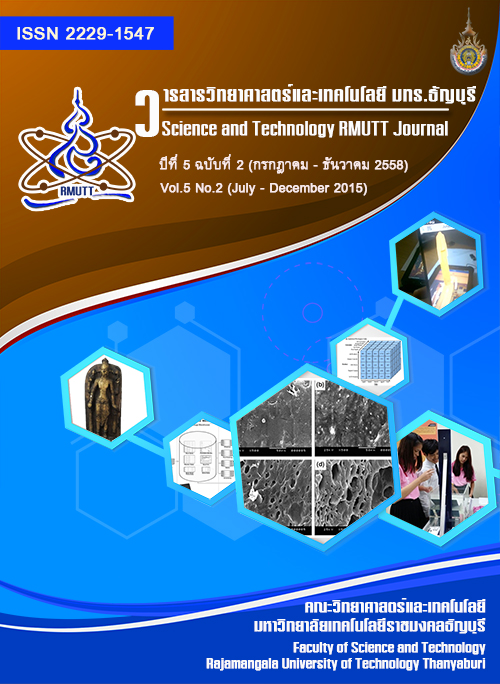Double Assembly Line Balancing Algorithms on Real-world Instances of Producing Digital Rice Cookers and Digital Hot Pots
Main Article Content
Abstract
This paper considers actual assembly line balancing problem’s instances of producing digital rice cookers and digital hot pots by a well-known Japanese manufacturer. To efficiently solve these instances, this paper proposes four assembly line balancing algorithms. Each proposed algorithm arranges the given work elements into the workstations by using the original precedence diagram as well as the reversed precedence diagram, through a particular simple heuristic. For any instance, each proposed algorithm thus provides two solutions, i.e., a solution for the instance with the original precedence diagram and a solution for the same instance with the reversed precedence diagram. The solution for the reversed precedence diagram is then modified to be usable for the original precedence diagram. The final solution of each proposed algorithm is the best solution between the two given solutions.
Article Details
References
P. Phiphatsomporn and P. Pongchairerks, “Double assembly line balancing methods for a manufacturer of digital rice cookers”. in the Proceedings of the International Conference on Science and Technology. Pathum Thani, Thailand. 2015. 424-429.
P. M. Groover. Work Systems and the Methods, Measurement, and Management of Work. New Jersey : Pearson Prentice Hall; 2007.
B. Rekiek, A. Delchambre. Assembly Line Design : The Balancing of Mixed-Model Hybrid Assembly Lines with Genetic Algorithms. Germany : Springer; 2006.
I. Baybars. A survey of exact algorithms for the simple assembly line balancing problem. Management Science. 32 (1986): 909-932.
N. Kriengkorakot, N. Pianthong. The assembly line balancing problem : review articles. KKU Engineering Journal. 34 (2007):133-140.
N. Kumar, D. Mahto. Assembly line balancing : a review of developments and trends in approach to industrial application. Global Journal of Researches in Engineering : Industrial Engineering. 13 (2013): 19-50.
V. Pachghare, R. S. Dalu. Assembly line balancing – a review. International Journal of Science and Research. 3 (2014): 807-811.
P. Sivasankaran, P. Shahabudeen. Literature review of assembly line balancing problems. International Journal of Advanced Manufacturing Technology. 73 (2014): 1665-1694.
A. L. Gutjahr, G. L. Nemhauser. An algorithm for the balancing problem. Management Science. 11 (1964): 23-35.
C. L. Moodie, H. H. Young. A heuristic method of assembly line balancing for assumptions of constant or variable work element times. Journal of Industrial Engineering. 16 (1965): 23-29.
W. B. Helgeson, D. P. Birnie. Assembly line balancing using ranked positional weight technique. Journal of Industrial Engineering. 12 (1961): 394-398.
B. Ibrahim. Production flow in gas cooker assembly line. Journal of Babylon University. 21 (2013): 1752-1761.
C. Ünal, A new line balancing algorithm for manufacturing cell transformation in apparel industry. Industria Textil"a" ̌, 64 (2013): 155-162.
J. K. Shim, J. G. Siegel. Operations Management. New York : Barron’s Educational Series; 1999.
J. Konnully. Assembly Line Balancing – Example. Internet: http://www.slideshare.net/ JosephKonnully/asslylinbalexample. 2013 [Nov. 5, 2014].
S. Bhattacharya. Operations Management. Delhi: PHI Learning Provate; 2014.
J. Heizer, B. Render. Principle of Operations Management. 10th ed. New Jersey : Pearson Prentice Hall; 2011.
G. Nirmala, D. Ramprasad. Genetic algorithm with topology to solve minimizing waiting time of ALBP. Aryabhatta Journal of Mathematics and Informatics. 6 (2014): 169-174.
J. C. Chen, C.-W. Wu, T. D. Thao, L.-H. Su, W.-H. Hsieh, T. Chen. Hybrid genetic algorithm for solving assembly line balancing problem in footwear industry. Advanced Material Research. 939 (2014): 623-629.
U. Ozcan, H. Cercioglu, H. Gokcen, B. Toklu. A tabu search algorithm for the parallel assembly line balancing problem. G.U. Journal of Science. 22 (2009): 313-323.
L. Ozbakir, A. Baykasoglu, B. Gorkemli, L. Gorkemli. Multiple-colony ant algorithm for parallel assembly line balancing problem. Applied Soft Computing. 11 (2011): 3186-3198.


